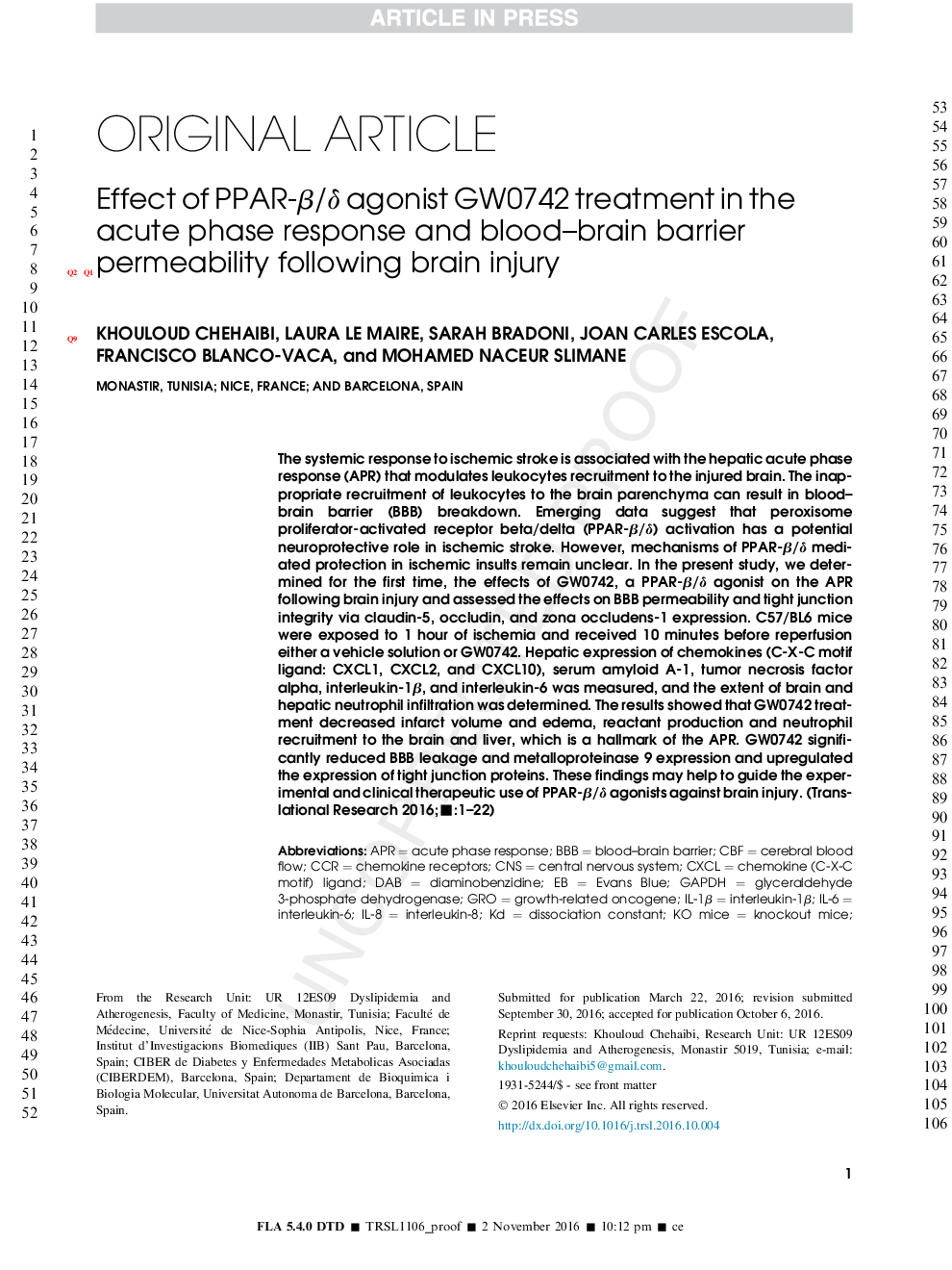| Article ID | Journal | Published Year | Pages | File Type |
|---|---|---|---|---|
| 5685095 | Translational Research | 2017 | 22 Pages |
Abstract
The systemic response to ischemic stroke is associated with the hepatic acute phase response (APR) that modulates leukocytes recruitment to the injured brain. The inappropriate recruitment of leukocytes to the brain parenchyma can result in blood-brain barrier (BBB) breakdown. Emerging data suggest that peroxisome proliferator-activated receptor beta/delta (PPAR-β/δ) activation has a potential neuroprotective role in ischemic stroke. However, mechanisms of PPAR-β/δ mediated protection in ischemic insults remain unclear. In the present study, we determined for the first time, the effects of GW0742, a PPAR-β/δ agonist on the APR following brain injury and assessed the effects on BBB permeability and tight junction integrity via claudin-5, occludin, and zona occludens-1 expression. C57/BL6 mice were exposed to 1 hour of ischemia and received 10 minutes before reperfusion either a vehicle solution or GW0742. Hepatic expression of chemokines (C-X-C motif ligand: CXCL1, CXCL2, and CXCL10), serum amyloid A-1, tumor necrosis factor alpha, interleukin-1β, and interleukin-6 was measured, and the extent of brain and hepatic neutrophil infiltration was determined. The results showed that GW0742 treatment decreased infarct volume and edema, reactant production and neutrophil recruitment to the brain and liver, which is a hallmark of the APR. GW0742 significantly reduced BBB leakage and metalloproteinase 9 expression and upregulated the expression of tight junction proteins. These findings may help to guide the experimental and clinical therapeutic use of PPAR-β/δ agonists against brain injury.
Keywords
CBFperoxisome proliferator-activated receptor beta/deltaKO miceMIP-2ZO-1CXCLPMNIL-8SAAMCAOPPAR-γIL-1βTTCNF-kBIL-6CCRPBSGAPDHDAB2,3,5-triphenyltetrazolium chlorideTJsAprtight junctionsmiddle cerebral artery occlusionInterleukin-8interleukin-6Interleukin-1βEvans Bluecerebral blood flowDissociation constantCNSdiaminobenzidinegrowth-related oncogeneBlood–brain barrierBBBserum amyloid Acentral nervous systemnuclear factortumor necrosis factorTNF-αpolymorphonuclear leukocyteschemokine (C-X-C motif) ligand macrophage inflammatory protein-2Phosphate-buffered salineKnockout micewild-typeacute phase responsePeroxisome proliferator-activated receptor gammaglyceraldehyde 3-phosphate dehydrogenaseGroChemokine receptors
Related Topics
Health Sciences
Medicine and Dentistry
Medicine and Dentistry (General)
Authors
Khouloud Chehaibi, Laura le Maire, Sarah Bradoni, Joan Carles Escola, Francisco Blanco-Vaca, Mohamed Naceur Slimane,
